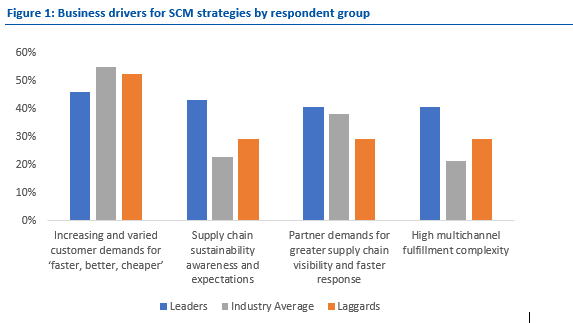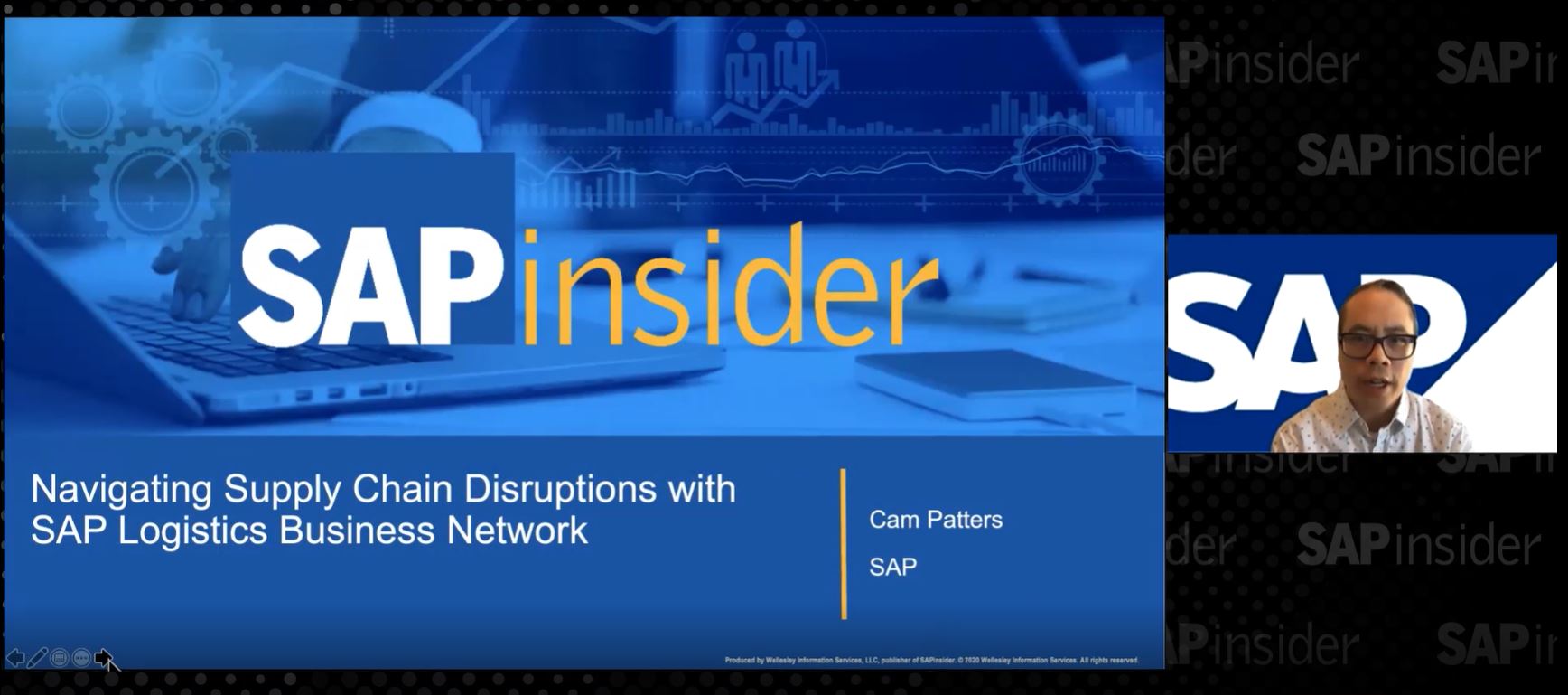Orchestrating Multi-Channel Order Fulfillment in Supply Chains
New SAPinsider report analyzes technology applications that solve operations problems. Learn about the impact of technology offerings on SAP customers.
SAPinsider’s upcoming report, “Supply Chain Transformation Strategies: IT vs. Operations in SAP Customer Landscapes,” shows that supply chain leaders do not shy away from complexity when it comes to their supply chain management (SCM) strategy.
The report presents findings that show that organizations identified as leaders – early adopters of technologies that find themselves significantly ahead of the competition when it comes to their digital SCM strategy – take a multi-channel order fulfillment approach to their supply chain. They leverage technologies for order management, business networks for procurement, and increased visibility through control towers to meet the complex requirements of multi-channel fulfillment. To build on that research, and to gain deeper insight into how SAP partners support customers in this area, we recently interviewed leadership at IBM about its Supply Chain Business Network (SCBN), order management portfolio, and visibility capabilities.
Here, we share some of the initial findings from a survey of SAP customers we conducted on Digital Transformation in the Supply Chain, as well as what we learned from our conversation with IBM leadership, including how they view technological solutions to supply chain issues.
Meeting High Multi-Channel Complexity with Advanced Sourcing Practices
While all groups of survey respondents – leaders, the industry average group, and laggards – showed a tendency to choose customer demands as a priority driver for their supply chain management (SCM) strategy, leaders were more likely to consider multiple drivers and pressures, listening to a broader group of stakeholders and fulfilling orders with a higher degree of multichannel complexity. Leaders chose high multi-channel fulfillment complexity as a driver at a rate of 41% vs. less than 30% of all others, as seen in Figure 1.
Factors in Choosing a Supply Chain Management Strategy

Source: SAPinsider, June 2019
Leaders employ advanced strategic sourcing practices to meet this level of complexity and ensure the goods get to customers quickly, even when demand peaks in varied locations. Implementing advanced strategic sourcing practices requires harmonized datasets and increased visibility so that supply chain planners and managers know where they have and do not have available inventory and can confidently communicate that to suppliers. A variety of technologies – such as Internet of Things (IoT) devices and mobile applications – can help source and distribute this data, but operations still need technologies for order management, business networks for procurement, and increased visibility into all data to implement advanced sourcing strategies and meet the demands of high multi-channel complexity.
Business Supply Networks, Order Management, and Visibility
Business supply networks help organizations manage, integrate, and securely exchange supply chain data in the cloud and between on-premise applications within and between enterprises and suppliers. IBM has the second largest such network after OpenText. These networks and the functions they manage, such as procure to pay, have their roots in electronic data interchange (EDI), which predates the World Wide Web by almost 20 years. The world has changed, and supply chains need to move beyond basic EDI into more advanced tools such as business supply networks, robotic process automation (RPA), and machine learning. Many related procurement tasks such as invoice processing can benefit from RPA.
The retail sector has led the way when it comes to using order management tools to orchestrate multi-channel order fulfillment. For better or worse, many retailers currently manage ecommerce inventory separately from brick-and-mortar stores. This requires a certain level of sophistication for consistent and cost-effective order fulfillment and visibility into all their inventory. Many still use spreadsheets even though vendors have introduced more advanced tools and software-as-a-service (SaaS) applications to help manage this.
Outdoor equipment and apparel retailer and service provider REI used IBM Watson’s AI to optimize their order management fulfillment processes. Before, REI had to say no to 800,000 orders each year because it did not have visibility into all its inventory. Now, it does.
As a result, REI has lowered fulfillment costs, improved business results, and made more sales because it can now fulfill them. Surprisingly, tech presented less of a hurdle than deciding who to credit with a sale: stores or ecommerce?
What Does This Mean for SAPinsiders?
Based on the findings from our research on digital transformation in the supply chain, and our conversations with IBM leadership, the following will help SAP customers fulfill more orders with more sophisticated solutions:
- Operations/Business leaders should sponsor and drive transformation and technology adoption in supply chain, not IT. IT plays a key role in technology deployment, but multichannel order fulfillment usually involves a high degree of complexity; operations needs to drive technology solutions because they know what they want to achieve.
- Meet supply chain business objectives with a scalable enterprise-wide platform. Many companies can solve their business problems with point solutions that create more data silos. The best solutions will harmonize data across the enterprise and improve visibility. Focus on one or two achievable objectives with fast business value – such as improving the picture of inbound supply – but with an eye on more holistic transformation.
- Manufacturers should move more to build-to-order. Manufacturers must ship products to count revenue. With service-level agreements (SLAs) across a business network and increased visibility to hold suppliers accountable, manufacturers can get orders to the right place at the right time with reduced support tickets and reduced inventory.
- Retailers should plan for less build-to-order. With better planning and a more efficient use of existing inventory across its network and capabilities such as return to store, appointments for pick-up in store, and on-time deliveries, retailers should fulfill more orders faster with a better customer experience.
Following this strategic guidance should help SAP customers plan supply chains in a way that accelerates growth. For additional insights and lessons learned, look for the upcoming SAPinsider benchmark report “Supply Chain Transformation Strategies: IT vs. Operations in SAP Customer Landscapes,” coming in September 2019.
As we get closer to our Intelligent Customer-Driven Supply Chain Conference in Orlando, Florida, don’t miss our trending supply chain content
Pierce Owen, VP, Research, SAPinsider, can be reached at Pierce.Owen@wispubs.com.






